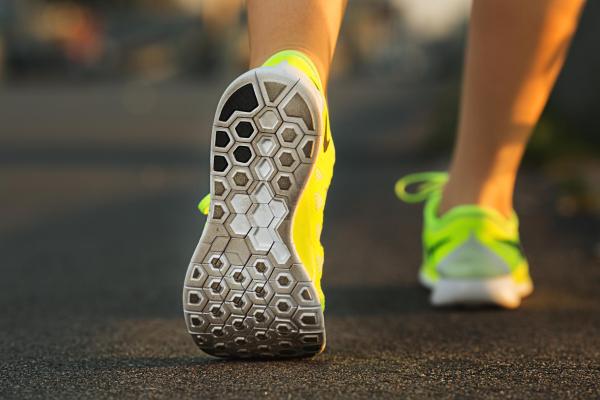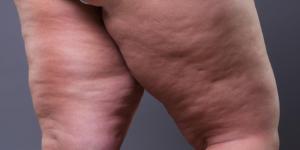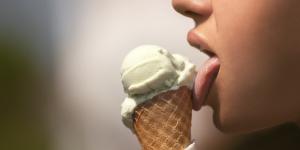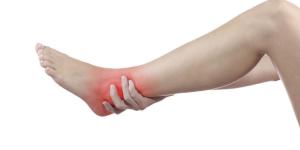Is Walking Good for Hip Bursitis?


The body has a series of joints that work to facilitate the performance of movements of all kinds. The hip is one of the most important for locomotion, but it is also one which is most prone to injury. This is partly because it is responsible for carrying much of the body's weight and issues such as poor posture can affect it greatly. Even wearing the wrong shoes can result in hip problems. One such hip problem is known as hip bursitis. This is the inflammation of the cushioning of the hip joints. It can be incredibly painful to the point in prohibits even light exercise.
At oneHOWTO, we look into how we can exercise with hip joint inflammation by asking is walking good for hip bursitis? In doing so, we find out what we need to do to determine walking is OK, as well as what ways we can safeguard our hips from further pain and inflammation, while still maintaining health and wellbeing.
What is hip bursitis?
Hip bursitis is an inflammation of the synovial bursa located in this area. A common form of hip bursitis is known as greater trochanteric pain syndrome (GTPS). This is because it is due to inflammation of the trochanteric bursa, a gelatinous sac that can be found on various joints of the body. These include the elbows, shoulders, knees, hips and ankle. Their main function is to prevent friction between the bone and soft tissues (both muscles and, in the case of hip bursitis, the iliotibial band). In doing so, these bursae act as a cushion or shock absorber.
In the hip area there are two types of bursa. There is the greater trochanteric bursa, located on the outside of the hip (see diagram below), and the iliopectineal or iliopsoas bursa which is located on the inside next to the groin. When either of these become inflamed, they are known as hip bursitis. Although the hip is directly affected, the pain can be concentrated in the groin area.
The two bursae are quite prone to irritation and inflammation, especially the one known as the bag of the femoral greater trochanter. The iliopectineal bursa can also be affected, but tends to suffer less. Bursitis is a condition that is commonly suffered by people between the ages of 30 and 60, but the incidence may be higher in middle age.

Can I walk with hip bursitis?
In the acute phases of hip bursitis, any exercise that requires weight bearing can increase pain. Walking on flat surfaces at a moderate pace may even be enough to cause discomfort. If you love walking and you can't avoid going out again, you should take it very easy and always pay attention to your body. Although exercise is very important even if you have bursitis, we need to consider the pros and cons.
If you do go walking with hip bursitis, there are some factors you need to consider:
- Choose shoes that provide adequate support: these include running shoes and walking shoes, but even these need to be suitable for your feet. Even if they are designed for sport, they can be the wrong shoes for your needs and exacerbate the problem.
- Walk on level, stable ground: do not walk on hilly areas or places with tripping hazards, even if the ground is flat. A small trip or fall can be sufficient to cause great pain and exacerbate the bursitis significantly.
- Do not overdo it: in case of inflammation, exceeding physical limits can cause irreversible damage to the hip.
- Consult your doctor first: if you get the go-ahead, start walking cautiously, patiently, and with attention to your body. Respond to what it is trying to say to you.
After the first phase of intense pain, exercise is usually prescribed to gradually improve joint issues. For this reason, walking is not only possible with bursitis, but it will be a part of the treatment, as long as it is moderate.
Can I exercise with hip bursitis?
Not only can you exercise with hip bursitis, but it is important for you to do so. Unless unable to physically, everyone should exercise as part of a healthy lifestyle. A sedentary lifestyle is a contributing factor in the development of hip bursitis, so exercise helps to achieve and maintain a healthy body mass index. In addition, it increases your mental wellbeing.
See a physiotherapist for advice before starting a new exercise program, especially in the acute phases of hip bursitis. This specialist will help you determine which are the best exercises to progress with this ailment and cater to your specific needs.
The objective of the exercise for hip bursitis is to strengthen the muscles responsible for supporting the body, especially the quadriceps. These are the large and strong muscles corresponding to the thighs. The lower back, buttocks and torso are also strengthened. These muscles relieve pressure on the hips and promote excellent posture.
Learn more about the anatomy of the pelvis by reading our article on what the hip bone is called.

Prohibited exercises for trochanteritis
If you suffer from hip bursitis, exercise such as moderate walking can help to relieve the symptoms and improve joint strength. However, the wrong kind of exercise can undo your good work and result in a very painful situation. While there are others, some of the most important exercises to avoid if you have hip bursitis include the following:
- Deep squats: they demand too much effort from the hip. There is no way to deep squat without putting a significant degree of pressure on the hip and inflaming the hip further.
- Cycling: bicycling is limited to an advanced stage of the hip bursitis recovery process. It should start slowly and with light intensity (i.e. no long rides or races).
- Cardiovascular machines: treadmills, elliptical machines and stair climbers require completely healthy hips to be able to perform the exercise correctly. All cardio machines involve a series of movements that you should avoid with hip bursitis.
- Leg lifts: these are exercises that require strong hip muscles, whether they are straight or lateral leg lifts.
- Excessive duration of physical activities: most people with hip bursitis find that complete both the absence of movement and performing repetitive movements for a long time worsen pain and can make recovery more difficult.
This article is merely informative, oneHOWTO does not have the authority to prescribe any medical treatments or create a diagnosis. We invite you to visit your doctor if you have any type of condition or pain.
If you want to read similar articles to Is Walking Good for Hip Bursitis?, we recommend you visit our Diseases & secondary effects category.






